Traditional Japanese Rooms - The Structure And Parts Of Washitsu

When staying in a ryokan, traditional accommodation in Japan, washitsu, or Japanese-style rooms, may have many features that surprise you. From tatami to sliding doors and futon, we outline some of the main parts of a classic room.
All About Traditional Japanese Rooms
While there are a dizzying array of accommodations to chose from while visiting Japan, there are sure to be many that are tempted to stay in ryokan, or Japanese inns, which have washitsu, or classic Japanese rooms, complete with tatami mats and screen doors. These inns are found in jokamachi castle towns, like Himeji and Matsumoto, hot spring districts, or be built in a restored machiya, and are very likely to feature some architectural or interior points that you just can't find overseas. Ryokan are found in Tokyo and big cities, as well.
In this article, we take a look at some of the traditional aspects of a Japanese house or accommodation, and explain their purpose.
The Doors of a Traditional Japanese Room
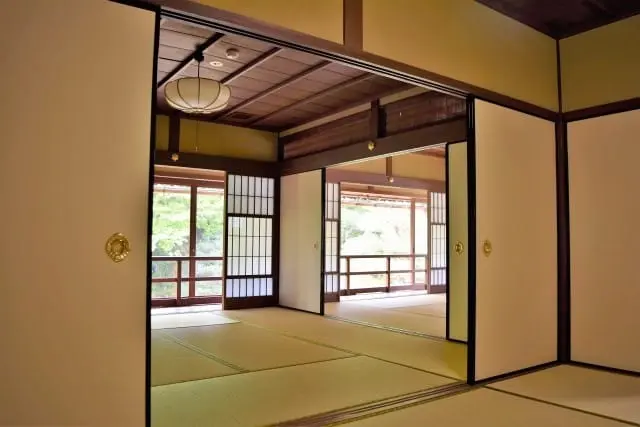
Picture from Fusuma (Sliding Doors) - Japanese Encyclopedia
There are three types of doors you are likely to encounter inside a traditional washitsu at a ryokan: a Western style door, fusuma, or shoji. Fusuma are paper-covered doors, often painted with flowers, landscapes, or works of calligraphy.
Shoji, on the other hand, are wooden doors with a sheet of plain washi paper between the two wooden panels. While the differences between fusuma and shoji are mainly down to style, you are more likely to find a shoji door as the entrance to a space, while a fusuma acts as a room divider in the majority of cases.
Tatami Mat Flooring in Washitsu
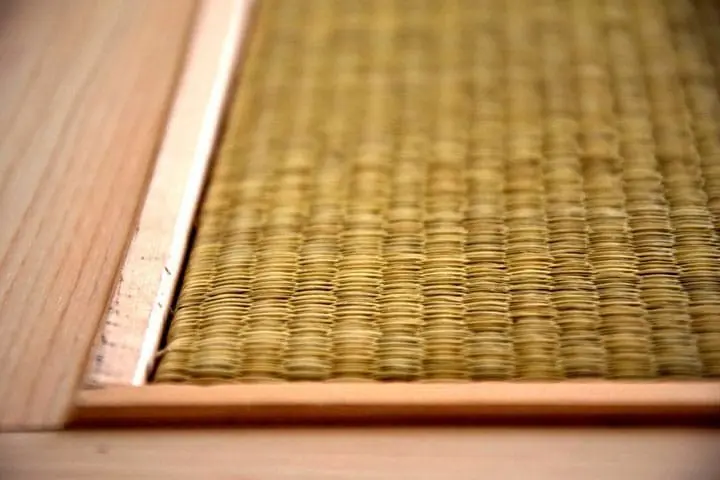
Picture from Japanese Encyclopedia: Tatami
Everyone, of course, knows that you must take your shoes off when visiting a Japanese home or inn, but why?
Well, one of the reasons for this is that the floors in traditional Japanese rooms, called washitsu, are often covered in tatami flooring. Tatami are mats made from woven rush grass edged with embroidered ribbon or wooden trim, and when freshly made, are a light green color and have a soft, grass-like scent to them. These floors age into a tan color, and have the dual ability to insulate the floors in winter and to be a cooling surface to lie on during the summer.
A Kotatsu or Irori Heater for the Winter
One side of Japanese buildings that isn't often spoken of is their heating and air conditioning, or lack thereof. Central air is not often found in residential buildings, and practically unheard of in older, historical buildings. There are plenty of windows and open passageways to help cool down the building in summer, but how are you supposed to stay warm in the winter?
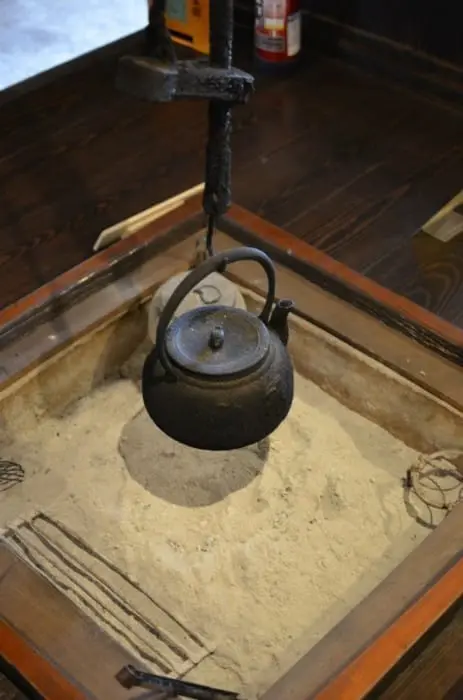
Picture from Japanese Encyclopedia: Irori
If you are visiting a historical building or staying in a 100 year old inn, then you may have an irori in a common room or kitchen to enjoy. Irori is a large hearth or fire pit not only used for heating, but also for cooking as well. Similar fire pits like the irori are also found in places where sado, or tea ceremonies, are taught and take place, although on a much smaller scale than those formerly used for heating and cooking.
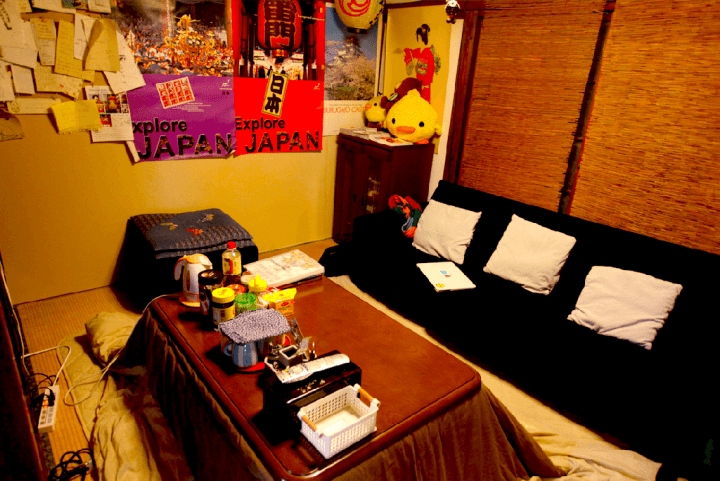
Picture from Japanese Encyclopedia: Kotatsu, Horigotatsu (Table Heater, Sunken Table Heater)
According to many, the modern-day kotatsu actually evolved from the irori, first as a charcoal heater, then to the modern electric style, which is essentially a heater placed on a table frame, covered in a blanket, with a wooden table top over the whole structure. Kotatsu are a winter staple, practically every home has one, as do a great number of ryokan, hostels, and even some guesthouses too.
Tokonoma for Decoration
In the vast majority of ryokan or other accommodations, one thing that many visitors will notice is that the walls tend to be a uniform color, usually white or beige, and there are few, if any, paintings or photographs to break up these long expanses of neutral colors. While this may seem boring at first, there is a reason for this lack of decoration.
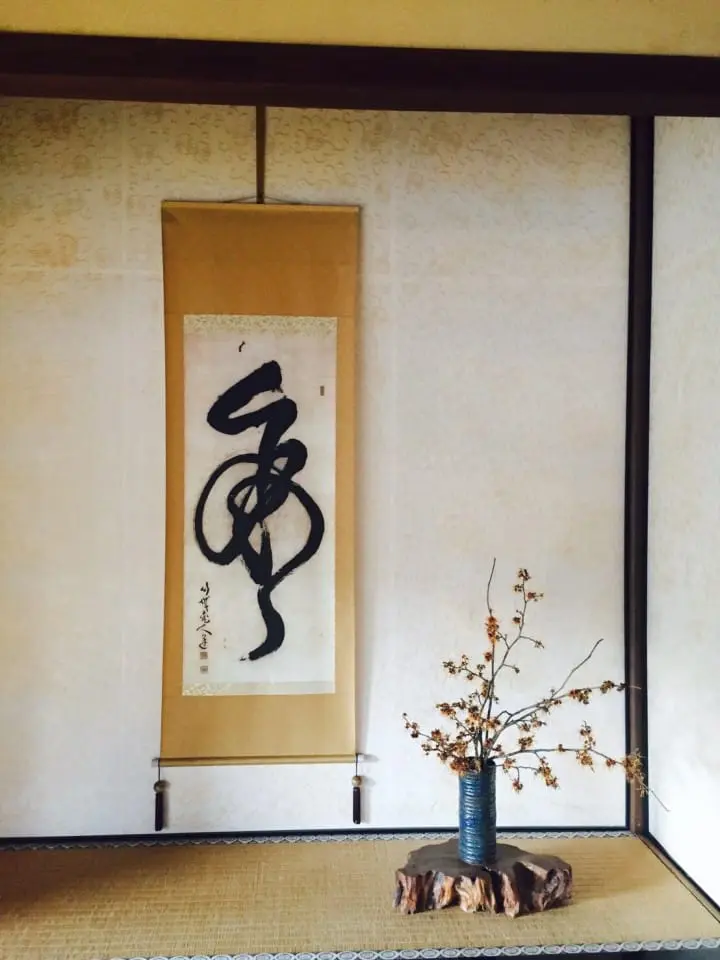
Picture from Kakegawa Castle, Shizuoka: An Authentic Castle Experience Awaits You
Washitsu traditionally have a space called the tokonoma, which is a raised alcove across from the entrance to the room. This is where certain items are displayed based on the season. The tokonoma is meant to be the focal point of the room, which is why the other walls are left plain.
The items typically on display in the tokonoma are hanging scrolls featuring seasonal poems or contemplative words written in beautiful Japanese calligraphy, seasonal ikebana floral arrangements, and sometimes even Buddhist statues, or naturally formed decorative stones. In some more modern washitsu, you may even find copies of famous ukiyo-e or Japanese paintings, daruma figures, or even a maneki neko figurine or two.
Sit on Zabuton Floor Cushions
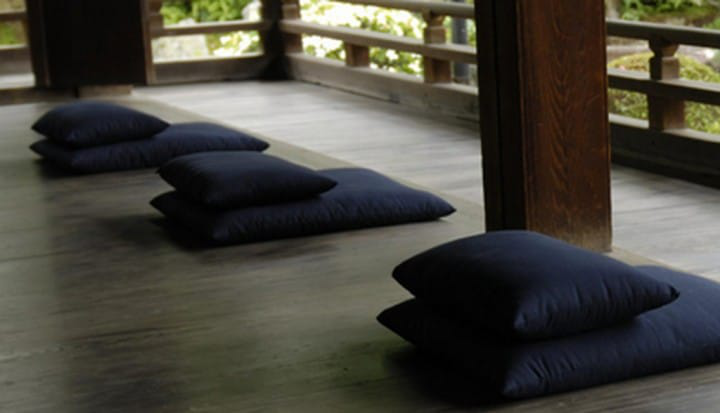
Picture from Japanese Encyclopedia: Zabuton (Floor Cushion)
In a room with a woven rush floor, you can't really sit on something that might get dragged about and damage the flooring, so you won't find any chairs in the Western sense of the word in a washitsu. What you will find instead are zabuton, which are large, sturdy cushions placed directly on the floor for you to sit or kneel on. These come in a wide range of sizes, colors or patterns and thicknesses, and are often changed to match the season at a high-class ryokan.
If you aren't used to sitting on something without a back though, zabuton can be somewhat tiring. Some accommodations have legless chairs - essentially large zabuton with an attached chair back. Be careful though, if you try to lean back on one of these, you might find yourself lying down suddenly!
Sleep on Japanese Futon

One of the biggest differences between traditional Japanese rooms and modern rooms at accommodations is the way in which guests sleep. Most lodgings offering washitsu will come with futon, light cotton mattresses that go on the floor. Futon are folded up and stored away in a closet when not being used to keep it fresh. Guests at ryokan with futons may be surprised after check-in if their bedding isn't set up for them. Look in the closet before inquiring to the front desk!
At high-end lodgings, the accommodation will make the futons for you in the evening, usually. Futon are thought to be good for the back and general health but may take getting used to.
Get Comfortable in a Washitsu!
Now that you know the basic parts of a typical washitsu, you are sure to feel all the more comfortable spending time in one. Pull up a zabuton and gaze at the displays in the tokonoma - you will be feeling peaceful and rested in no time!
Read also
Main picture by Pixta. This article is a rewritten version of an article originally published in 2016.
Writer, translator, designer, weirdo.





































![[Reopening in March 2026] Ikoma Sanjo Amusement Park Park, 45 minutes from Osaka , with free admission](https://resources.matcha-jp.com/resize/720x2000/2024/08/28-194409.webp)
![[Gunma] 5 recommended gourmet foods at Kawaba Denen Plaza Roadside Station!](https://resources.matcha-jp.com/resize/720x2000/2025/02/26-225970.webp)
![[Kanazawa] Enjoy the world of gold leaf to the fullest in the city with the highest production volume in Japan](https://resources.matcha-jp.com/resize/720x2000/2025/11/12-249564.webp)
![[2026] Family Winter Trip to Suzuka Circuit! – For Both Day trips and Overnight Stays!](https://resources.matcha-jp.com/resize/720x2000/2025/12/26-254097.webp)